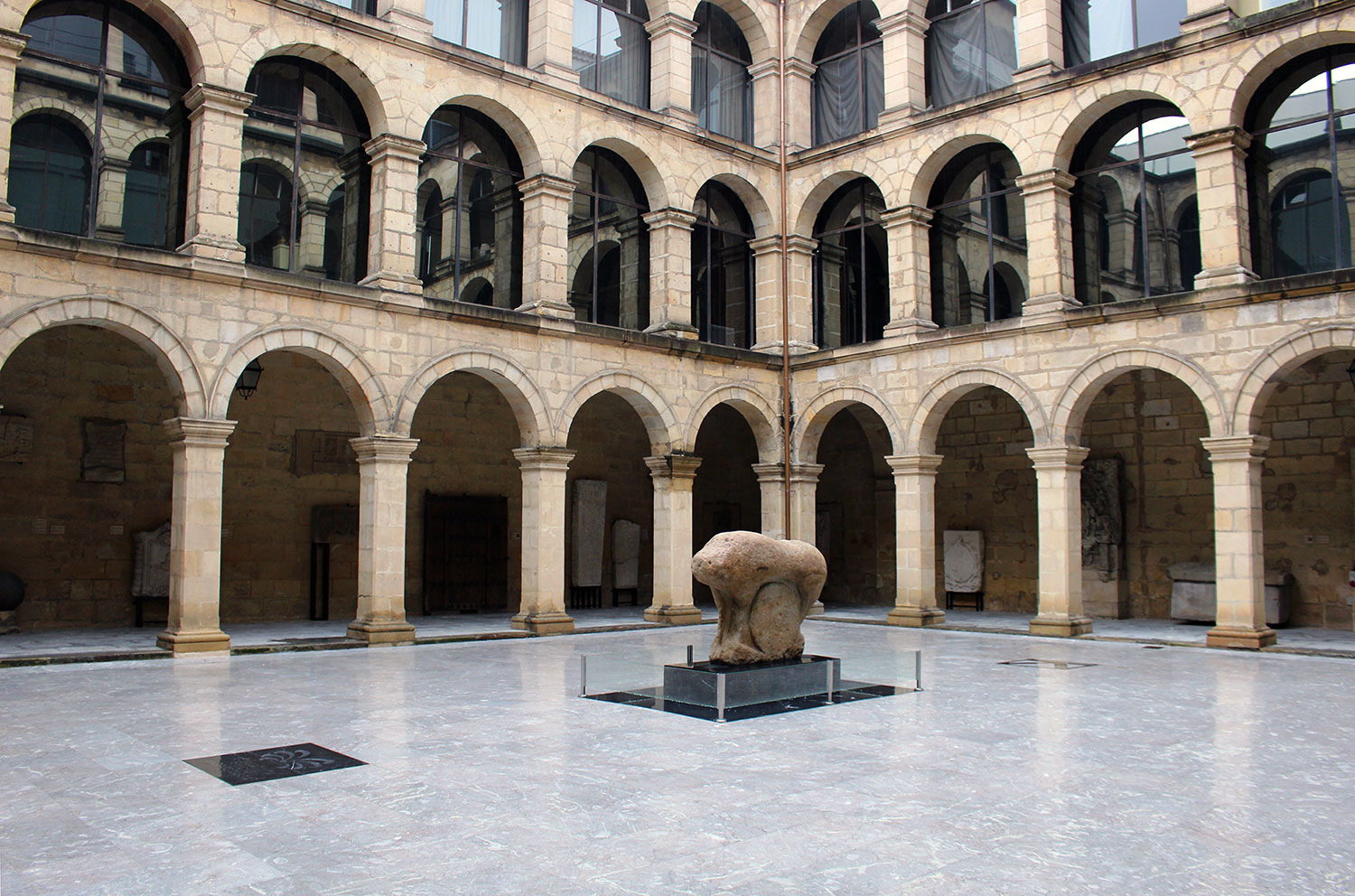OIHALAK ETA TEKNIKAK
Industria iraultza izan zen mugarri nagusia jantziak egiteko erabilitako oihaletan. Batetik, etxean ekoiztutako liho eta artilea zeuden, mendeetan zehar lehengai nagusiak izandakoak. Bestetik, fabriketan egindako kotoizko oihalek oso harrera ona izan zuten. Azkenik, ezin dira ahaztu atzerritik edo penintsulatik iritsitako belusa eta damasko erako zetak, artile merinoak, kotoi indianoak…
Ekoizpen modu eta denborak ziren bata eta bestearen arteko desberdintasunik handienak. Lihoa eta artilea artisau erara lantzen ziren etxe giroan. Lehenaren kasuan landaketa auzolanean edota familia zabalaren baitan egiten zen, baina matazak harilkatzerainoko bidea emakumeen neguko lanik garrantzitsuenetakoa izan ohi zen.
Industria iraultzarekin batera hedatutako kotoizko oihala, aldiz, eginda erosi zitekeen prezio onean. Kolore eta estanpazio berriek bestelako forma eta moduak ekarri zizkioten janzkera tradizionalari.
TELAS Y TÉCNICAS
La revolución industrial fue el principal condicionante en las telas empleadas para elaborar las prendas de vestir. Por una parte, estaban el lino y la lana de producción doméstica, que durante siglos habían sido las principales materias primas. Por otra parte, las telas de algodón elaboradas en las fábricas tuvieron muy buena acogida. Por último, no podemos olvidar las sedas tipo terciopelo y damasco llegadas desde el extranjero o desde la península, las lanas merinas, los algodones indianos…
Las mayores diferencias entre unos elementos y otros residían en los modos y tiempos de producción. El lino y la lana se trabajaban de manera artesanal en un ambiente relacionado con el hogar. En el primer caso, el cultivo se llevaba a cabo mediante auzolan (trabajo comunal) o dentro del extenso ámbito familiar, pero el proceso hasta conseguir las madejas solía ser uno de los trabajos invernales más relevantes de las mujeres.
El tejido de algodón que se extendió junto con la revolución industrial, en cambio, podía comprarse ya fabricado y a buen precio. Los nuevos colores y estampados aportaron nuevas formas y modos a la vestimenta tradicional.
FABRICS AND TECHNIQUES
The industrial revolution was the main conditioning factor in the fabrics used to make clothing. On the one hand, there was the domestically produced linen and wool, which had been the main raw materials for centuries. On the other hand, cotton fabrics made in the factories were very popular. Finally, we cannot leave out the velvet and damask silks from abroad or from the Iberian Peninsula, merino wools, Indian cotton, etc.
The greatest differences between these elements lay in the modes and times of production. Linen and wool were handcrafted in a home-related environment. In the first case, the work was carried out by means of auzolan (communal work) or within the extended family environment, but the task of winding the skein used to be one of the most important winter jobs for women.
The cotton that spread with the industrial revolution, on the other hand, could be bought ready-made and at a good price. New colours and prints brought new shapes and forms to traditional clothing.
LES TISSUS ET LES TECHNIQUES
La révolution industrielle fut le principal facteur qui détermina le choix des tissus utilisés dans l’élaboration des vêtements. D’une part, il y avait le lin et la laine, produits dans la sphère domestique, qui avaient été durant des siècles les principales matières premières. De l’autre, les tissus en coton élaborés dans les usines, qui connurent immédiatement un grand succès. Enfin, nous ne pouvons pas oublier les soies de type velours et damas venus de l’étranger ou du reste de l’Espagne, les laines mérinos, les cotons indiens…
Les principales différences entre les uns et les autres résidaient dans les modes et les temps de production. Le lin et la laine étaient travaillés de façon artisanale, le plus souvent dans les foyers. Le premier était généralement obtenu du travail communal (auzolan) ou de la famille élargie, mais le filage et la confection des pelotes de laine faisaient partie des principaux travaux d’hiver des femmes.
En revanche le coton, qui se répandit avec la révolution industrielle, pouvait être acheté déjà fabriqué et à un bon prix. Les nouvelles couleurs et les imprimés apportèrent à l’habillement traditionnel d’autres formes et types de confection.

